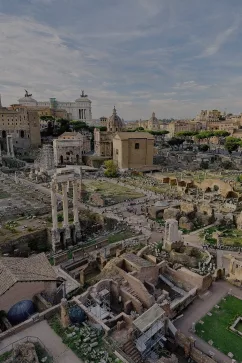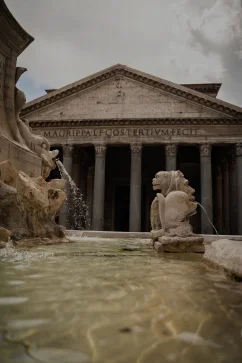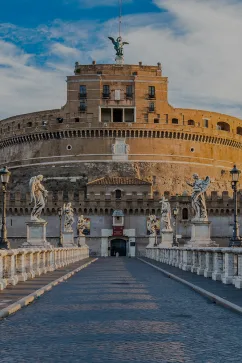Catacombs of Rome
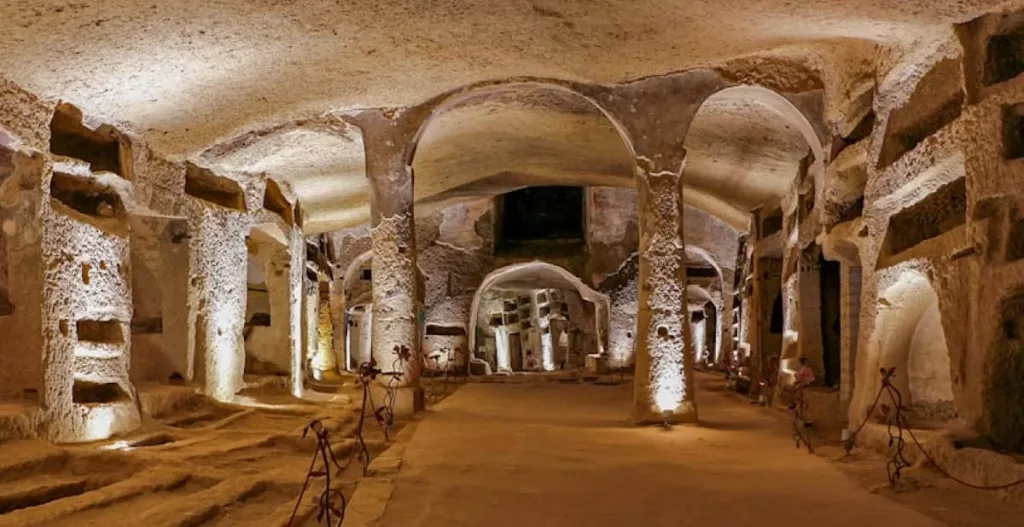
About the Catacombs of Rome
Beneath the bustling streets of Rome lie a hidden world of history and mystery – the catacombs. The network of tunnels and chambers that make up these underground graveyards under Rome provide a fascinating look into the past and the chance to discover a lesser-known facet of the Eternal City.
The Catacombs of Rome, a network of subterranean tunnels and chambers, were primarily used for burying early Christians and Jewish communities in ancient Rome. Today, several catacombs are open to the public, each with its own unique character and history. Among the best catacombs to visit in Rome are the Catacombs of San Callisto, San Sebastiano, and Domitilla. You may travel back in time in these Rome underground catacombs thanks to their elaborate frescoes, crypts, and corridors.
As you venture through these ancient Roman catacombs, you’ll encounter awe-inspiring sights, including the haunting yet mesmerizing sight of ancient skeletons and beautifully preserved frescoes that adorned the tombs. A unique opportunity to delve into the past is offered by the Rome Underground Catacombs. You may discover where early Christians were buried, view brilliant murals that represent biblical stories, and learn more about the religious and social life of ancient Rome as you wander through these underground labyrinths.

History of the Catacombs of Rome
The Catacombs of Rome history is a remarkable journey through time that unveils the intertwined stories of early Christianity and ancient Roman burial practices. These underground labyrinths, which began to take shape in the 2nd century AD, served as secret and sacred burial grounds for Christians during periods of persecution.
Over the centuries, they evolved into vast and intricate complexes, with tunnels and chambers adorned with frescoes, inscriptions, and symbols depicting Christian motifs and biblical narratives. The Catacombs of San Callisto, San Sebastiano, and Priscilla are only a few of the catacombs in Rome, each having a distinct history. Rediscovered during the Renaissance, they gained renewed interest and scholarly attention, shedding light on early Christian communities’ customs and beliefs.
The Catacombs of Rome nevertheless possess historical and theological significance today, giving visitors a direct link to the past and an understanding of the steadfast faith of those who sought safety and everlasting rest there. The perseverance and tenacity of the early Christians are still demonstrated by these underground wonders, which also shed light on the philosophical and cultural environment of ancient Rome.
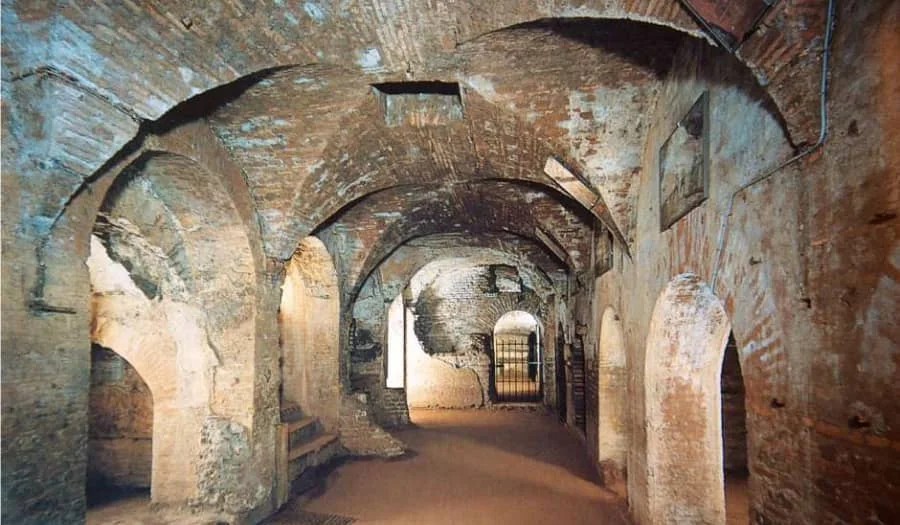
Tips for your visit
- Plan Ahead: Visit catacombs of Rome with other nearby attractions to make the most of your day, such as exploring the Appian Way or nearby historical sites.
- Arrive Early: To avoid crowds and enjoy a quieter experience, try to visit the catacombs early in the morning or during the week.
- Guided Tour: To fully appreciate the catacombs’ history and significance, opt for a guided tour. Knowledgeable guides can provide insights into the Christian symbols, frescoes, and the stories of the early Christian communities.
- Booking Tickets: Purchase your catacombs Rome tickets in advance, especially during peak tourist seasons. This can help you avoid long lines and ensure your preferred time slot.
- Appropriate Attire: Dress modestly out of respect for the sacred nature of the catacombs. Additionally, wear comfortable shoes, as you’ll be walking through underground tunnels.
- Photography: Check the photography policy at the catacombs you plan to visit. Some catacombs allow photography, while others do not.
- Respect the Environment: Be mindful of your surroundings and fellow visitors. Keep noise levels to a minimum and follow any rules or guidelines set by the catacombs’ staff.
- Be Prepared: Catacombs can be cool and damp, so bring a light jacket or sweater, even in the summer months. Also, consider bringing a bottle of water, as it can get warm during the tour.
- Choose Your Catacombs: Rome has several ancient Roman catacombs to explore, each with its unique features. Consider visiting popular ones like the Catacombs of San Callisto, San Sebastiano, or Priscilla, known for their historical significance.
Tickets
Explore the fascinating underground world of Rome’s catacombs with ease by securing your catacombs tickets in advance. Tickets for the Catacombs of Rome typically range from €5 to €8, depending on the site you choose to visit. To ensure a seamless experience, book your Catacombs Rome tickets online and select the catacomb that piques your interest the most, whether it’s the Catacombs of San Sebastiano, San Callisto, Priscilla, Domitilla, or Sant’Agnese. Don’t miss this chance to delve into the ancient history and rich heritage hidden beneath the city’s surface, purchase your tickets now!
How to arrive
The Catacombs of Rome are located outside the city center, and reaching them by public transportation requires a combination of metro and bus. Here’s how to get there:
By Metro and Bus: Take Line B (blue line) of the Rome Metro to the “Bologna” station. This is the closest metro station to the catacombs. From the “Bologna” metro station, you can either walk (approximately 1.5 miles or 2.4 kilometers) to the catacombs or take a bus.
To take a bus, exit the metro station and look for the bus stop. You can catch Bus 542 or Bus 544 from here, both of which will take you to the catacombs.
By Taxi: Taxis are readily available in Rome, and you can easily hail one to take you to the Catacombs of Rome. Just tell the driver your destination, and they will take you there directly.




